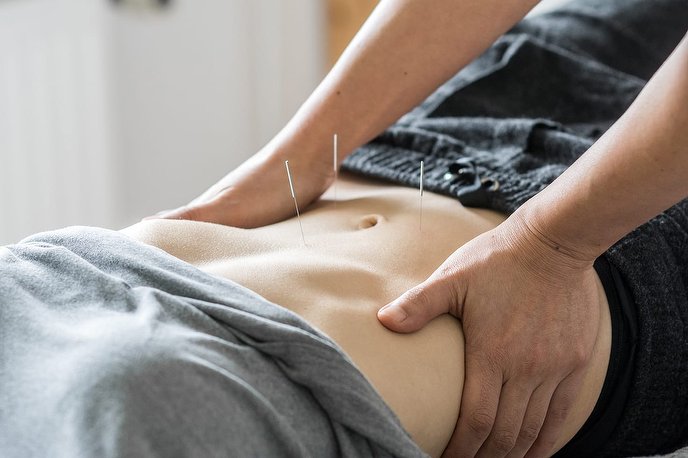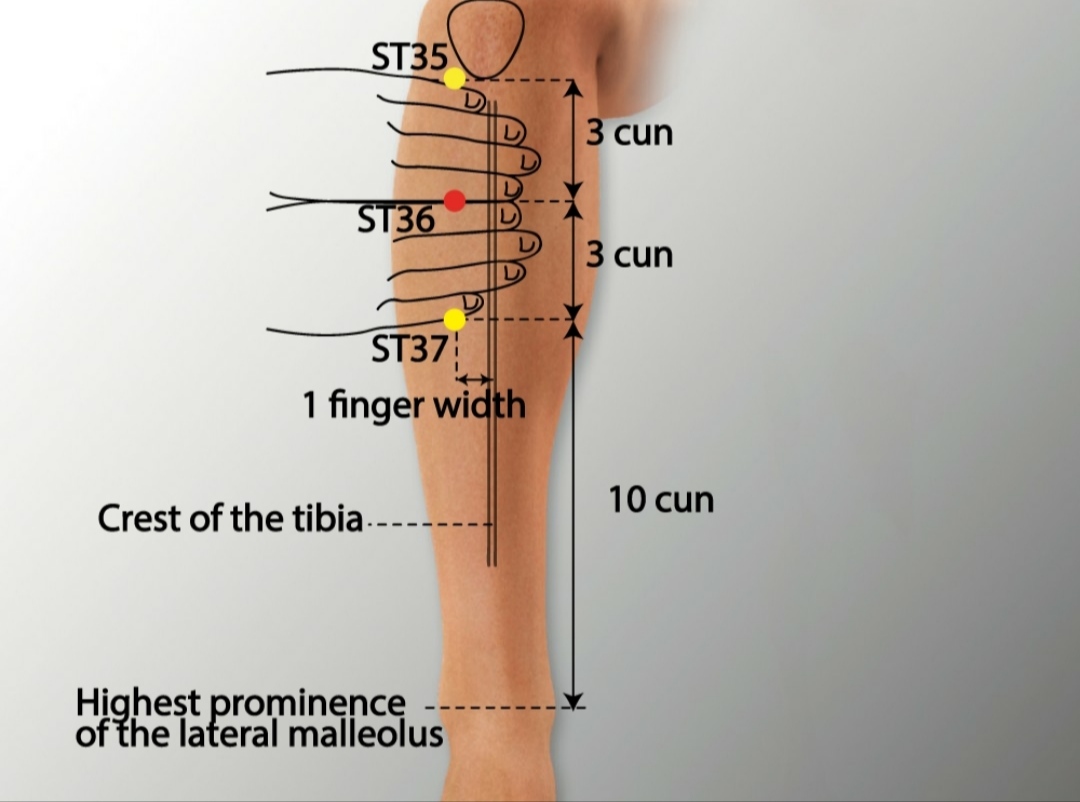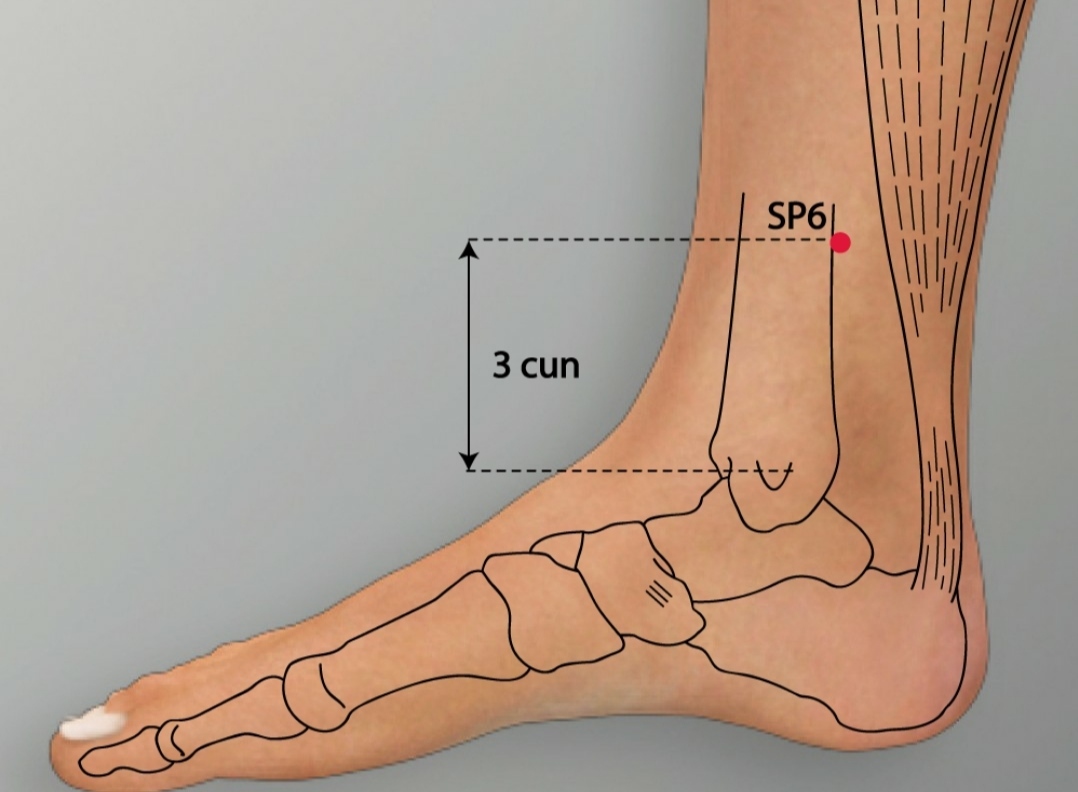Appendicitis and Acupuncture Treatment in Tokyo
Appendicitis is a medical condition that affects thousands of people worldwide each year, often requiring urgent attention. While conventional treatments like surgery remain the standard, complementary therapies such as acupuncture are gaining attention for their potential to manage symptoms and support recovery. In this guide, we’ll explore appendicitis in detail, discuss how acupuncture can be used as a complementary treatment, and highlight key acupoints for effective relief. Whether you’re seeking alternative options or curious about integrative care, this article provides actionable insights grounded in research and traditional Oriental medicine (TOM).
- What Is Appendicitis? Understanding the Condition
- Causes of Appendicitis
- Symptoms of Appendicitis
- Diagnosis
- Conventional Treatments
- The Role of Acupuncture in Appendicitis Treatment
- Can Acupuncture Treat Appendicitis?
- When to Use Acupuncture for Appendicitis
- How Acupuncture Works for Appendicitis
- Mechanisms of Action
- Acupuncture Treatment Process
- Safety and Considerations
- Key Acupoints for Appendicitis Treatment
- Benefits of Acupuncture for Appendicitis
- Scientific Evidence and Research
- Integrating Acupuncture with Conventional Treatment
- Lifestyle Tips for Appendicitis Prevention and Recovery
- Frequently Asked Questions (FAQs)
- Conclusion
What Is Appendicitis? Understanding the Condition
Appendicitis is the inflammation of the appendix, a small, tube-like organ attached to the large intestine. Though its exact function remains unclear, the appendix can become a source of severe pain and complications when inflamed. Appendicitis is most common in people aged 10 to 30 but can occur at any age.
Maybe You Need:
Causes of Appendicitis
Appendicitis typically occurs when the appendix becomes blocked, leading to bacterial overgrowth and inflammation. Common causes include:
- Fecaliths (hardened stool) obstructing the appendix.
- Enlarged lymphoid follicles, often due to infection.
- Foreign objects, such as seeds or small debris.
- Tumors (rarely), which may block the appendix.
Infections, such as gastrointestinal viruses, can also contribute to inflammation. If untreated, appendicitis can lead to serious complications like a ruptured appendix, abscess formation, or peritonitis (infection of the abdominal cavity).

Symptoms of Appendicitis
Recognizing appendicitis early is critical for effective treatment. Common symptoms include:
- Abdominal pain, starting near the navel and shifting to the lower right abdomen.
- Loss of appetite.
- Nausea and vomiting.
- Fever (usually low-grade initially).
- Constipation or diarrhea.
- Bloating or abdominal tenderness.
Pain typically worsens with movement, coughing, or sneezing. A hallmark sign is rebound tenderness, where pressing and releasing the abdomen causes sharp pain.
Diagnosis
Doctors diagnose appendicitis through:
- Physical exams, checking for tenderness and rebound pain.
- Blood tests, to detect elevated white blood cell counts.
- Imaging, such as ultrasound or CT scans, to confirm inflammation.
- Urinalysis, to rule out urinary tract infections.
Prompt diagnosis is essential, as delays can increase the risk of complications.
Conventional Treatments
The standard treatment for appendicitis is appendectomy, a surgical procedure to remove the appendix. This can be performed via:
- Open surgery, involving a larger incision.
- Laparoscopic surgery, using small incisions and a camera.
In some cases, antibiotics may be used to treat mild, uncomplicated appendicitis, though surgery remains the most common approach. Post-surgery recovery typically takes 1–3 weeks, depending on the procedure and patient health.

The Role of Acupuncture in Appendicitis Treatment
Acupuncture is a key component of traditional Oriental medicine, practiced for over 2,000 years. It involves inserting thin, sterile needles into specific points on the body, known as acupoints, to stimulate energy flow and promote healing. According to TOM, illness results from imbalances in Energy, and acupuncture restores harmony by targeting meridians (energy pathways).
Modern research suggests acupuncture influences the nervous system, releasing endorphins, reducing inflammation, and improving blood flow. These effects make it a promising complementary therapy for various conditions, including pain-related disorders like appendicitis.
Can Acupuncture Treat Appendicitis?
Acupuncture is not a standalone cure for appendicitis, especially in acute cases requiring surgery. However, it can serve as a complementary therapy to:
- Relieve pain associated with appendicitis or post-surgical recovery.
- Reduce inflammation in mild cases or during recovery.
- Support digestion and alleviate symptoms like nausea or bloating.
- Enhance overall recovery by boosting the immune system and reducing stress.
In TOM, appendicitis is often linked to stagnation of Energy and blood in the lower abdomen or damp-heat accumulation in the intestines. Acupuncture addresses these imbalances by clearing blockages, reducing heat, and promoting circulation.
When to Use Acupuncture for Appendicitis
Acupuncture is most effective in the following scenarios:
- Pre-surgical symptom management: To reduce pain and nausea before an appendectomy.
- Post-surgical recovery: To alleviate pain, improve digestion, and speed healing.
- Chronic or recurrent abdominal pain: For patients with non-acute appendicitis or related conditions.
- Mild cases: In some early-stage, uncomplicated cases, acupuncture may support conservative management under medical supervision.
Important Note: Acute appendicitis is a medical emergency. Always consult a doctor before using acupuncture, as delaying surgery can lead to life-threatening complications.

How Acupuncture Works for Appendicitis
Mechanisms of Action
Acupuncture’s therapeutic effects are supported by both TOM principles and modern science. Key mechanisms include:
- Pain relief: Acupuncture stimulates the release of endorphins and enkephalins, natural painkillers that reduce discomfort.
- Anti-inflammatory effects: Needling acupoints can lower pro-inflammatory cytokines, helping to reduce swelling in the appendix or surrounding tissues.
- Nervous system modulation: Acupuncture influences the autonomic nervous system, calming overactive responses and improving visceral function.
- Improved circulation: By enhancing blood flow, acupuncture supports tissue repair and reduces stagnation in the abdomen.
Acupuncture Treatment Process
A typical acupuncture session for appendicitis-related symptoms involves:
- Consultation: The acupuncturist assesses the patient’s symptoms, medical history, and TOM diagnosis (e.g., Energy stagnation or damp-heat).
- Point selection: Specific acupoints are chosen based on the patient’s condition and needs.
- Needle insertion: Thin needles are inserted into acupoints, often left in place for 20–30 minutes.
- Adjunct therapies: Techniques like moxibustion (heating acupoints with mugwort) or electroacupuncture (mild electrical stimulation) may be used.
- Follow-up: Multiple sessions (e.g., 1–2 per week) may be recommended, depending on the severity and response.
Sessions are generally painless, with patients reporting mild tingling or warmth at the needle sites.
Safety and Considerations
Acupuncture is safe when performed by a licensed practitioner using sterile needles. However, considerations include:
- Contraindications: Acupuncture should not delay surgery in acute appendicitis.
- Side effects: Rare, but may include minor bruising or temporary soreness.
- Practitioner expertise: Choose a certified acupuncturist with experience in treating abdominal conditions.
Always inform your acupuncturist about your medical history, including appendicitis diagnosis or recent surgery.
Key Acupoints for Appendicitis Treatment
In TOM, acupoints are selected based on their ability to address specific symptoms and underlying imbalances. Below are key acupoints commonly used for appendicitis-related pain, inflammation, and recovery, along with their locations and benefits.
- Lanwei (Appendix Point)
- Location: On the right leg, approximately 2 cun (finger-widths) below ST36 (Zusanli), slightly lateral to the tibia.
- Benefits: Directly targets appendix inflammation and pain. This extra point is specific to appendicitis in TOM and is often tender in patients with the condition.
- Application: Needled bilaterally or on the right side, often with moxibustion for added warmth.
- ST36 (Zusanli)
- Location: On the leg, 3 cun below the knee, one finger-width lateral to the tibia.
- Benefits: Strengthens digestion, boosts immunity, and reduces abdominal pain. ST36 is a versatile point for gastrointestinal issues and general vitality.
- Application: Commonly used in combination with Lanwei for appendicitis symptom relief.

- LI11 (Quchi)
- Location: At the elbow, at the end of the crease when the arm is flexed.
- Benefits: Clears heat and reduces inflammation, making it effective for fever and swelling associated with appendicitis.
- Application: Needled bilaterally to address systemic inflammation.
- PC6 (Neiguan)
- Location: On the inner forearm, 2 cun above the wrist crease, between the tendons.
- Benefits: Alleviates nausea, vomiting, and abdominal discomfort. PC6 also calms the mind, reducing stress during recovery.
- Application: Used for appendicitis-related nausea or post-surgical digestive issues.
- SP6 (Sanyinjiao)
- Location: On the inner leg, 3 cun above the ankle, behind the tibia.
- Benefits: Regulates digestion, promotes blood flow, and reduces abdominal pain. SP6 is a key point for lower abdominal conditions.
- Application: Needled cautiously, as it is contraindicated in pregnancy.

- CV12 (Zhongwan)
- Location: On the midline of the abdomen, 4 cun above the navel.
- Benefits: Harmonizes the stomach and intestines, relieving bloating and digestive stagnation.
- Application: Used in post-surgical recovery to support gastrointestinal function.
- ST25 (Tianshu)
- Location: On the abdomen, 2 cun lateral to the navel.
- Benefits: Regulates intestinal function and relieves abdominal pain. ST25 is particularly effective for lower abdominal issues.
- Application: Needled bilaterally, often with gentle stimulation.

Acupoints are typically combined based on the patient’s symptoms. For example:
- Acute pain relief: Lanwei, ST36, and LI11.
- Nausea and vomiting: PC6, CV12, and ST36.
- Post-surgical recovery: SP6, ST25, and CV12.
Electroacupuncture may be applied to Lanwei or ST36 for enhanced pain relief, while moxibustion on ST36 can support recovery in patients with weak digestion.
Benefits of Acupuncture for Appendicitis
Pain Management
Acupuncture is highly effective for reducing abdominal pain, whether pre- or post-surgery. Studies show it can lower pain scores by stimulating endorphin release and modulating pain pathways.
Reduced Inflammation
By targeting acupoints like LI11 and Lanwei, acupuncture can decrease inflammatory markers, potentially aiding in mild cases or recovery.
Improved Digestion
Points like ST36 and CV12 support gastrointestinal motility, alleviating symptoms like bloating, constipation, or nausea.
Stress Reduction
Appendicitis and surgery can be stressful. Acupuncture’s calming effects, particularly through points like PC6, help patients relax and cope better.
Complementary to Conventional Care
Acupuncture integrates well with medical treatments, offering a holistic approach without interfering with surgery or antibiotics.
Scientific Evidence and Research
While acupuncture is widely used in TOM for abdominal conditions, research on its role in appendicitis is limited but promising. Key findings include:
- A 2018 study in the Journal of Pain Research found acupuncture effective for postoperative pain management, reducing opioid use in abdominal surgeries.
- A 2020 review in Evidence-Based Complementary and Alternative Medicine highlighted acupuncture’s anti-inflammatory effects in gastrointestinal disorders.
- Clinical case studies in China have reported success in using acupuncture for mild appendicitis, though larger trials are needed.
More research is required to establish acupuncture’s efficacy specifically for appendicitis, but its benefits for pain, inflammation, and digestion are well-documented.

Integrating Acupuncture with Conventional Treatment
For optimal outcomes, acupuncture should be used alongside medical care. Here’s how to integrate it effectively:
- Consult your doctor: Ensure acupuncture is safe for your condition, especially in acute cases.
- Coordinate care: Inform your acupuncturist about your diagnosis, surgery, or medications.
- Timing matters: Use acupuncture pre-surgery for symptom relief or post-surgery for recovery.
- Lifestyle support: Combine acupuncture with a healthy diet, hydration, and rest to enhance healing.
A multidisciplinary approach, involving surgeons, acupuncturists, and primary care providers, ensures comprehensive care.
Lifestyle Tips for Appendicitis Prevention and Recovery
While appendicitis isn’t always preventable, certain habits can support gut health and recovery:
- Eat a high-fiber diet: Include fruits, vegetables, and whole grains to prevent constipation, which may contribute to blockages.
- Stay hydrated: Adequate water intake supports digestion and reduces the risk of fecaliths.
- Exercise regularly: Gentle movement promotes intestinal health and reduces stagnation.
- Manage stress: Chronic stress can impair digestion; practices like meditation or yoga complement acupuncture.
- Follow post-surgical guidelines: Avoid heavy lifting and follow your doctor’s advice to prevent complications.
Frequently Asked Questions (FAQs)
Can acupuncture cure appendicitis?
No, acupuncture cannot cure appendicitis, especially in acute cases. It can help manage symptoms like pain and nausea and support recovery but should not replace medical treatment.
Is acupuncture safe after an appendectomy?
Yes, when performed by a licensed practitioner, acupuncture is safe post-surgery. It can aid in pain relief, digestion, and healing.
How many acupuncture sessions are needed?
The number of sessions varies based on symptoms and goals. Acute pain may require 1–3 sessions, while recovery support may involve weekly sessions for 4–8 weeks.
Are there risks with acupuncture for appendicitis?
Risks are minimal but include bruising or soreness. The primary risk is delaying surgery in acute cases, so always prioritize medical evaluation.
Can acupuncture prevent appendicitis?
There’s no evidence that acupuncture prevents appendicitis, but it can support overall digestive health, potentially reducing risk factors.
Conclusion
Appendicitis is a serious condition that often requires surgical intervention, but acupuncture offers a valuable complementary approach for managing symptoms and supporting recovery. By targeting key acupoints like Lanwei, ST36, and LI11, acupuncture can reduce pain, inflammation, and digestive discomfort while promoting overall well-being. When used alongside conventional medical care, it provides a holistic strategy for addressing appendicitis.
If you’re considering acupuncture for appendicitis-related symptoms, consult a licensed acupuncturist and your healthcare provider to ensure safe, coordinated care. With the right approach, acupuncture can be a powerful tool in your journey to recovery.
Fuji Wellness:
- Address: 132-0031 Matsushima 1-chome, 21-14, Tokyo, Japan
- Chat with us: Click here
- Email: sunnyphamsensei@gmail.com


